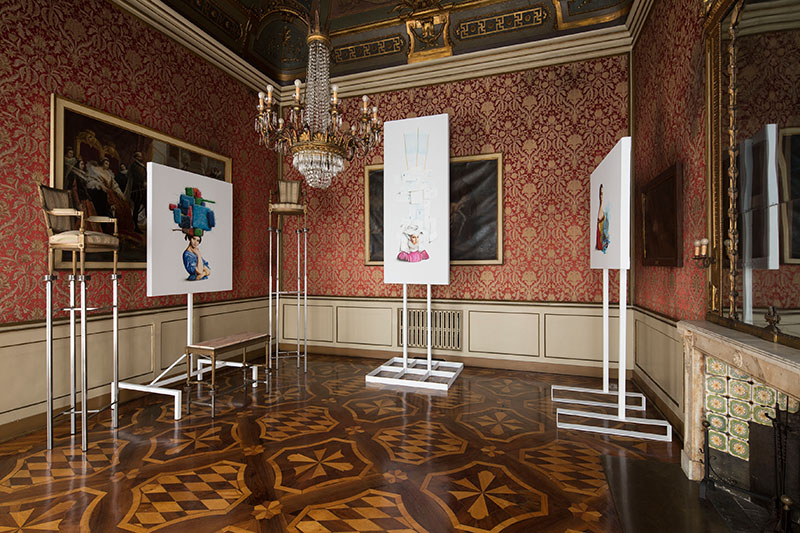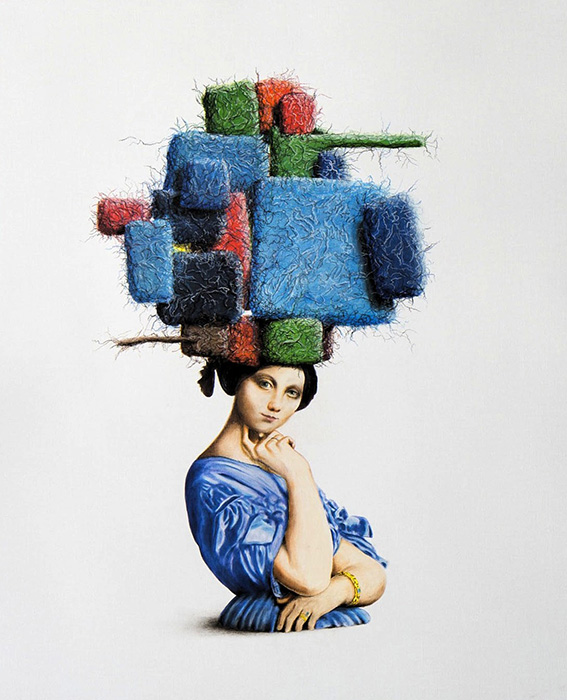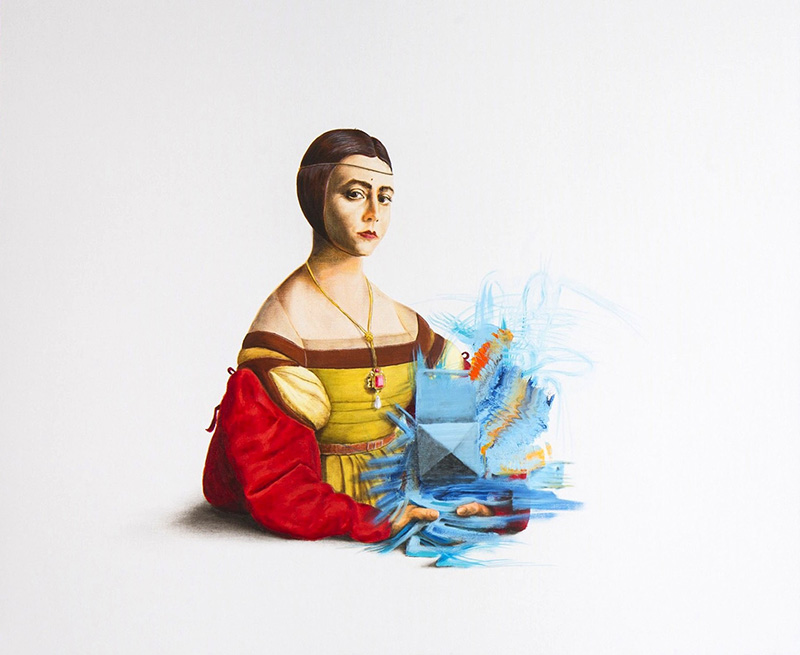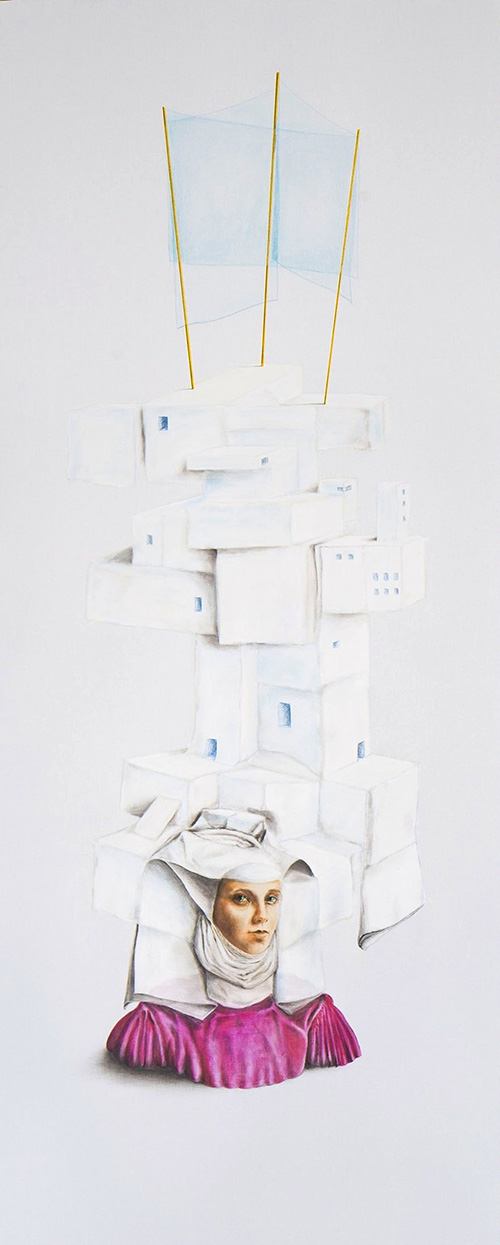 simone berti
simone berti

⊂ © ⊃

view

untitled, mixed media on canvas, cm. 150x120

untitled, mixed media on canvas, cm. 120x150

untitled, mixed media on canvas, cm. 250x100
… The same present in which the work of Simone Berti takes its place, drawing on a dense imaginary composed of cinema
and literature, history of art and architecture. For “II’ll Be There Forever” the artist observes art history to create paintings
inspired by the ladies in Flemish Renaissance art, where the white bonnets that frame their faces are transformed into imaginary
architectures that shift from the two-dimensional nature of the painting to the three-ddimensional character of sculpture. Berti’s
paintings are set into structures that even embrace the furnishings of the red hall of inlays and create a total environment,
multiplied and reflected. We find ourselves inside a disorienting,, hard to define context in which art, architecture and
environment take on diferent connotations that are impossible to classify. It is the aesthetic of Simone Berti in which things,
seen in the complexity attributed to them by Michel Foucault in The Order of Things (1966), begin to take on a life of their own,
and there are not even words to define them, entering the sphere of invention that cannot be traced or reduced to an encoded language.
Berti’s works are inventions: gardens suspended on springs; bar counters inserted in wheels that wrap them so they could roll or at least rock;
men installed on stilt/pedestals and positioned at the sides of an entrance like classical herms; family groups in steel structures,
paintings of gigantic trees; projects for dwellings in the trees that bring to mind another visionary, the Baron in the Trees (1957) of Calvino;
paintings of mechanisms isolated against white backgrounds in which nuts and bolts, tubes and feathers are transformed into characters;
parlours raised to the height of age-old plants in the forest at branch level, in broad daylight. Berti constructs a personal aesthetic
dimension in which he includes, with rare nonchalance, diferent eras and cultures, varied and apparently clashing suggestions that instead
of conflicting create depth, because they interact in a dialectical way to enter the seldom explored territory of paradox and invention.
In Berti’s works we find suggestions of the ruins of Giovanni Battista Piranesi, the tales of knights and ladies of the medieval tradition,
the Socialist architecture of the 1970s, the contemporary architecture of the Hamburg Opera by Herzog & de Meuron, all the way to the disorienting
images of Stalker (1979) by Tarkovsky and, by way of contrast, the ziggurats of the Mesopotamian tradition. The result is a present that stands out
in all its complex timeliness.
Cloe Piccoli